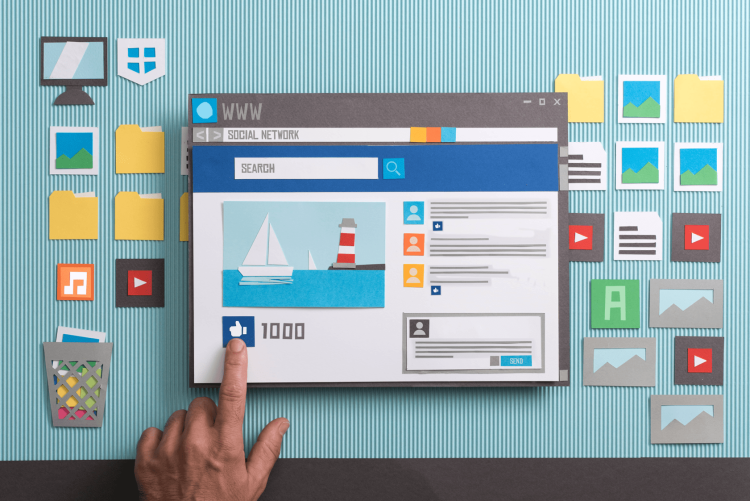
Social media is an essential marketing and branding tool easily accessible to businesses. The ability to connect and engage with your audience can be a significant role in business strategy. Leveraging their employees social media networks holds great potential to tap into an even larger audience too. Executives, managers and front-line workers all have unique social media networks and personal stories to share that can promote company culture, brand and lots more.
Below are key issues in the workplace to keep in mind when covering social media protocols in your employee handbook.
1. Social Media and Networking
Networking has become essential in the business world, both in-person and online in fact, many university programs require their students to develop an up-to-date LinkedIn profile before they graduate. When developing a company policy handbook, some questions to consider could be: Should all employees be encouraged/required to have an up-to-date LinkedIn profile, which lists their roles with your organization? Additionally, when attending work-related events (conferences, holiday parties, etc.), is it appropriate for employees to post online about the event? It is a great idea to develop policies and best practices on social media and networking in your employee manual to leverage employee networks while avoiding confusion or misrepresentation.
2. Recreational Use of Social Media
Social media has become the digital water cooler. Scrolling through Instagram can be a mind break, but should this be done on company computers? Some companies block access to Instagram and other social platforms due to its social media policy. Banning social media by disallowing employees access may help productivity while at work, but it can hurt engagement and morale. Depending on employee policy, it may be more beneficial to allow social media engagement under certain parameters like during morning and lunch breaks.
3. Security
Security is a critical issue when it comes to using social media safely at work. There could be a security risk involved when confidential data is sent through messaging systems. Facebook Messenger might seem convenient to send files and information, but could also potentially expose the company to risk. In most cases, sending sensitive work documents through social media should be discouraged. It is important to add rules and regulations surrounding security to your company manual.
4. Smartphones at the Office
Social media use via personal smartphones can be difficult for employers to monitor. There is the phenomenon of under-the-desk-texting while a computer screen appears to show work-related material. Your organization should address whether employees are allowed to respond on their personal smartphones as messages/updates come in throughout the day as well as if/what they are allowed to post at the office. For example; a seemingly harmless selfie taken at one s desk and posted online can create a security risk if the photo contains sensitive information from the cubicle wall or desktop that the public isn t meant to see. Employees should be made aware of rules/guidelines when it comes to using their smartphones at work via the employee handbook.
5. Use of Social Outside of Work
When developing your employee manual, it is important to address the use of social media outside of work hours. Some issues to address include employees identifying themselves as working for your company on various social platforms. Additionally, employees should be aware of the risks involved if they are posting inappropriate photos or commentary publically. Many professionals in politics or government will add a disclaimer to their Twitter bio: My tweets are my own and not opinions of my employer to protect themselves and the employer.
6. The Positive Side
Social media can be a positive and powerful tool to enable employees to be ambassadors of their companies. By facilitating social media workplace etiquette, companies will prosper from the advantage of a safe and secure place to work. Employees will learn the best practices when using social media whether at the workplace or out of office if companies incorporate how to s into their company manual. Reinforcing rules and restrictions will help employers set a workplace standard for what is acceptable and what is not.
As always, consult your employment lawyer to ensure that you have covered all bases and that your employee policies are balanced, thorough and fair.
